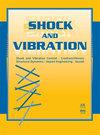Study on the Influence of Missile Cabin on Fragment Velocity under Explosive Detonation Impact
IF 1.2
4区 工程技术
Q3 ACOUSTICS
引用次数: 0
Abstract
For the air-to-air missile warhead, there is a cabin with a certain thickness at a distance around the fragments. At present, the influence of missile cabin has not yet been taken into account in the study of fragment velocity. In this paper, based on the law of conservation of energy, the theoretical equation of fragment velocity considering the kinetic energy of cabin debris was deduced. Then, the rationality of the theoretical formula is validated through the static explosion experiments of two prototype warheads, one with a titanium alloy cabin and the other without any cabin. It was found that after the warhead is equipped with the cabin, part of the energy is consumed to drive the cabin debris, resulting in a decrease in fragment velocity, but the velocity of cabin debris was greater than that of fragment of warheads without any cabin. Besides, through numerical simulation, the driving process of fragments and cabin debris during explosive detonation loading of the warhead with the cabin was studied, which can be divided into six stages, and the error between numerical result and experimental value is not more than 4.8%. Finally, the variety regulation of fragment velocity and cabin debris velocity at different interval distances was further studied by numerical simulation. The results indicate that fragment velocity of warheads with cabin at different interval distances is basically the same, but cabin debris velocity decreases with the increase of interval distance. This conclusion can provide a reference for the structural design and fragment velocity evaluation of warheads with cabin.导弹舱对爆炸冲击下碎片速度的影响研究
对于空对空导弹弹头来说,在碎片周围一定距离内有一个一定厚度的舱室。目前,在研究破片速度时尚未考虑导弹舱的影响。本文根据能量守恒定律,推导出了考虑舱体碎片动能的破片速度理论方程。然后,通过两枚原型弹头(一枚带有钛合金舱体,另一枚不带任何舱体)的静爆实验验证了理论公式的合理性。实验发现,弹头加装座舱后,部分能量被消耗用于驱动座舱碎片,导致碎片速度下降,但座舱碎片的速度大于无座舱弹头的碎片速度。此外,通过数值模拟,研究了带座舱弹头在爆炸装药过程中碎片和座舱碎片的驱动过程,可分为六个阶段,数值结果与实验值的误差不大于 4.8%。最后,通过数值模拟进一步研究了不同间隔距离下弹片速度和弹舱碎片速度的变化规律。结果表明,不同间隔距离的带座舱弹头碎片速度基本相同,但座舱碎片速度随间隔距离的增加而减小。这一结论可为带座舱弹头的结构设计和碎片速度评估提供参考。
本文章由计算机程序翻译,如有差异,请以英文原文为准。
求助全文
约1分钟内获得全文
求助全文
来源期刊

Shock and Vibration
物理-工程:机械
CiteScore
3.40
自引率
6.20%
发文量
384
审稿时长
3 months
期刊介绍:
Shock and Vibration publishes papers on all aspects of shock and vibration, especially in relation to civil, mechanical and aerospace engineering applications, as well as transport, materials and geoscience. Papers may be theoretical or experimental, and either fundamental or highly applied.
 求助内容:
求助内容: 应助结果提醒方式:
应助结果提醒方式:


